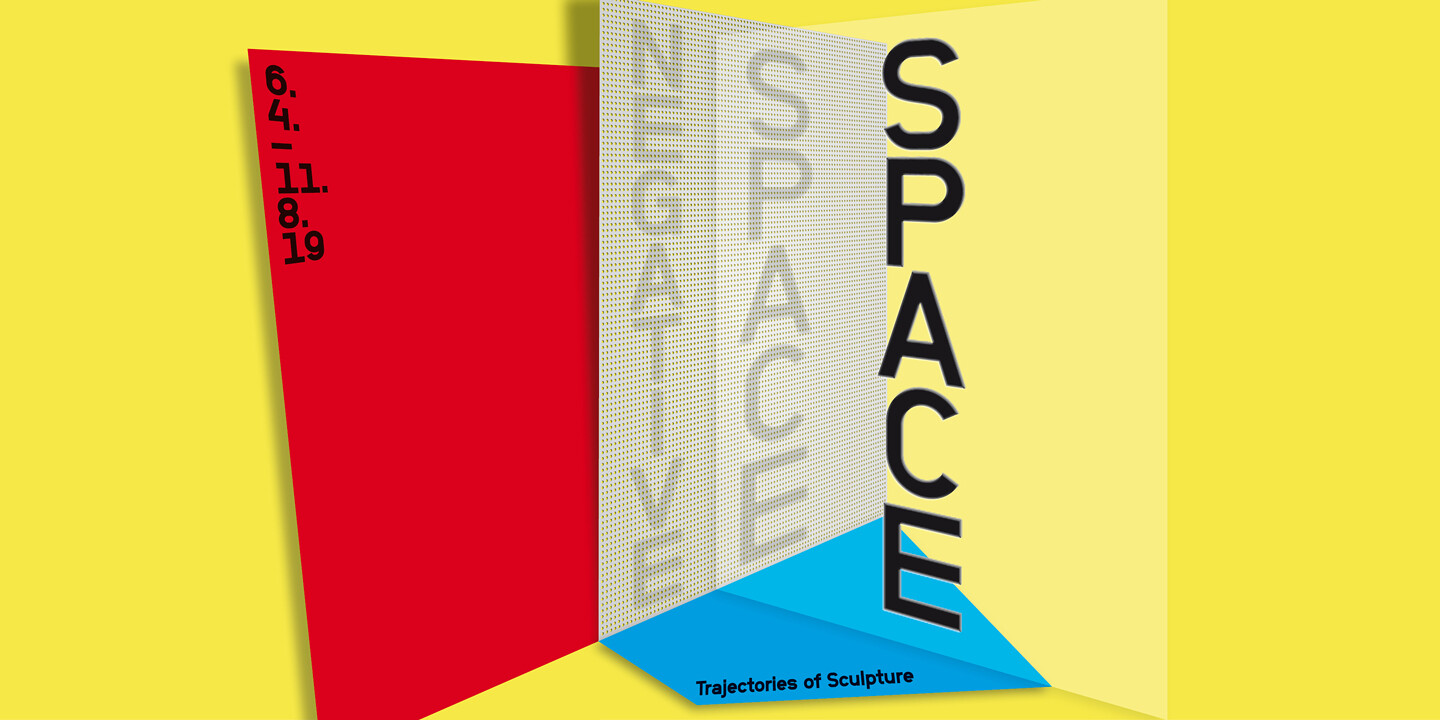April 6–August 11, 2019
Since antiquity, the history of Western sculpture has been closely linked to the idea of the body. Therefore our expectations concerning sculpture are still essentially driven by the concept of body sculpture, which is formally based on the three essential categories of mass, volume, and gravity, whether body-related like Auguste Rodin’s or abstract like Richard Serra’s.
The exhibition Negative Space endeavors to challenge the dominating view of modern and contemporary sculpture by telling a different story. The unique achievement, which sets sculpture apart in 20th and 21st centuries, is a decisive shift towards abstract and empty space. This major leap from body sculpture to spatial sculpture followed as a result of significant advances in the natural sciences, in combination with novel materials, innovative construction techniques and a new focus shifting from the two-dimensional surface of nonobjective painting to three-dimensional space.
The presented art works address this spatial turn and the sculptural phenomenon in relation to diverse spatial concepts: Open spaces, voids, hollow and intermediate spaces, spatial constructions and outlines, mirror, light and shadow spaces, virtual data spaces, etc. The exhibition offers a comprehensive overview of the art of sculpture, which—in contrast to the traditional concept—is committed to contour, emptiness, and levitation. Visitors will experience that the sculpture of the 20th century is pendent, not standing; not ponderous but floating; not full but empty, airy, and light; not opaque but diaphanous; not real but virtual; not massy but slim.
Artists drew aesthetic inspiration in particular from concrete model forms made of plaster and wire that were to illustrate mathematical equations. Therefore in addition to the artistic works, mathematical models from the 19th and 20th centuries will be presented from the collections of the universities of Darmstadt, Freiberg, Göttingen, Heidelberg, and Karlsruhe.
By featuring about 200 pioneering artistic positions, which develop novel approaches to sculpture through processes and models of abstraction, construction and non-objectivity, the exhibition provides manifold artistic references to unfold the concept of “negative space.”
Negative Space gathers works by: Robert Adams, Yaacov Agam, Andreu Alfaro, Getulio Alviani, Refik Anadol, Leonor Antunes, Richard Anuszkiewicz, Hans Arp, Nairy Baghramian, Rudolf Belling, Etienne Beöthy, Hicham Berrada, Jakob Bill, Max Bill, David Bill, Marinus Boezem, Walter Bodmer, László Zsolt Bordos, Martin Boyce, Oscar Bronner, Trisha Brown, Mary Ellen Bute, Alexander Calder, Peter Campus, Nina Canell, Gerard Caris, Anthony Caro, Mariana Castillo Deball, Alice Cattaneo, Lygia Clark, Gianni Colombo, Constant, Iván Contreras-Brunet, Elias Crespin, Attila Csörgö, Jose Dávila, Jan Dibbets, Sinje Dillenkofer, Marcel Duchamp, Loys Egg, Olafur Eliasson, Pieter Engels, Eventstructure Research Group, Knopp Ferro, Ferenc Ficzek, Emanuela Fiorelli, Berta Fischer, Wolfgang Flad, Barry Flanagan, Marcel Floris, Michel François, María Freire, Gerhard Frömel, Franziska Furter, Naum Gabo, Dora García, Horacio Garcia Rossi, Gego, Ingo Glass, Mathias Goeritz, Gun Gordillo, Antony Gormley, Daiga Grantina, Carla Guagliardi, Shilpa Gupta, Edgar Gutbub, Hans Haacke, Spiros Hadjidjanos, Rachel Harrison, Jeppe Hein, Katharina Heinrich, Douglas and David Henderson, Barbara Hepworth, Antonia Hirsch, Gerhard Hoehme, Olaf Holzapfel, Paolo Icaro, Enio Iommi, Michael Jacklin, Robert Jacobsen, Karlis Johansons, Dieter Jung, Walter Kaitna, Anish Kapoor, Žilvinas Kempinas, Anselm Kiefer, Toshimasa Kikuchi, Kimchi and Chips, Viacheslav Koleichuk, Hans Kooi, Gyula Kosice, Yvonne Kracht, Egor Kraft, Edward Krasiński, Kitty Kraus, Norbert Kricke, Hans Kupelwieser, Alicja Kwade, Paul Le Grand, Marie Lienhard, Bernd Lintermann, Adolf Luther, Len Lye, Heinz Mack, Holger Mader, Karel Malich, Piero Manzoni, Kenneth Martin, Gordon Matta-Clark, Jakob Mattner, Franco Mazzucchelli, Anthony McCall, Konstantin Medunezkij, Christian Megert, Ana Mendieta, László Moholy-Nagy, Henry Moore, François Morellet, Bruno Munari, Marie-Luce Nadal, Fujiko Nakaya, Timo Nasseri, Wolfgang Nestler, Oswald Oberhuber, Jong Oh, Hélio Oiticica, Lydia Okumura, Jerzy Olek, Yasuaki Onishi, Sarah Oppenheimer, Jorge Oteiza, Fritz Panzer, Goran Petercol, Antoine Pevsner, Otto Piene, Michelangelo Pistoletto, Terry Pope, Sergio Prego, Random International, Man Ray, Erich Reusch, Àngels Ribé, George Rickey, Alexander Rodchenko, Sigurd Rompza, Ingo Ronkholz, Fred Sandback, Pietro Sanguineti, Tomás Saraceno, Alan Saret, Alfons Schilling, Buky Schwartz, Richard Serra, Jeffrey Shaw, Conrad Shawcross, Inés Silva, Regina Silveira, Kenneth Snelson, Francisco Sobrino, Ed Sommer, Monika Sosnowska, Jesús Rafael Soto, Natalia Stachon, Vladimir Stenberg, Robert Steng, Katja Strunz, Alexander Stublic, Hiroshi Sugimoto, Haruhiko Sunagawa, Vassilakis Takis, Jean Tinguely, Luca Trevisani, Thomas Troge, Troika, Wen-Ying Tsai, London Tsai, H. W. Twardzik, Timm Ulrichs, Giuseppe Uncini, Georges Vantongerloo, Grazia Varisco, Bernar Venet, Paule Vézelay, Mary Vieira, Carel Visser, Ruth Vollmer, Nikolaus Völzow, Martin Walde, Andy Warhol, Benjamin Weber, Peter Weibel, Pae White, Rachel Whiteread, Heike Wiermann, Markus Wilfling, Martin Willing, Erwin Wurm, Jan Zappe.
Curators: Peter Weibel, and Anett Holzheid, Daria Mille



